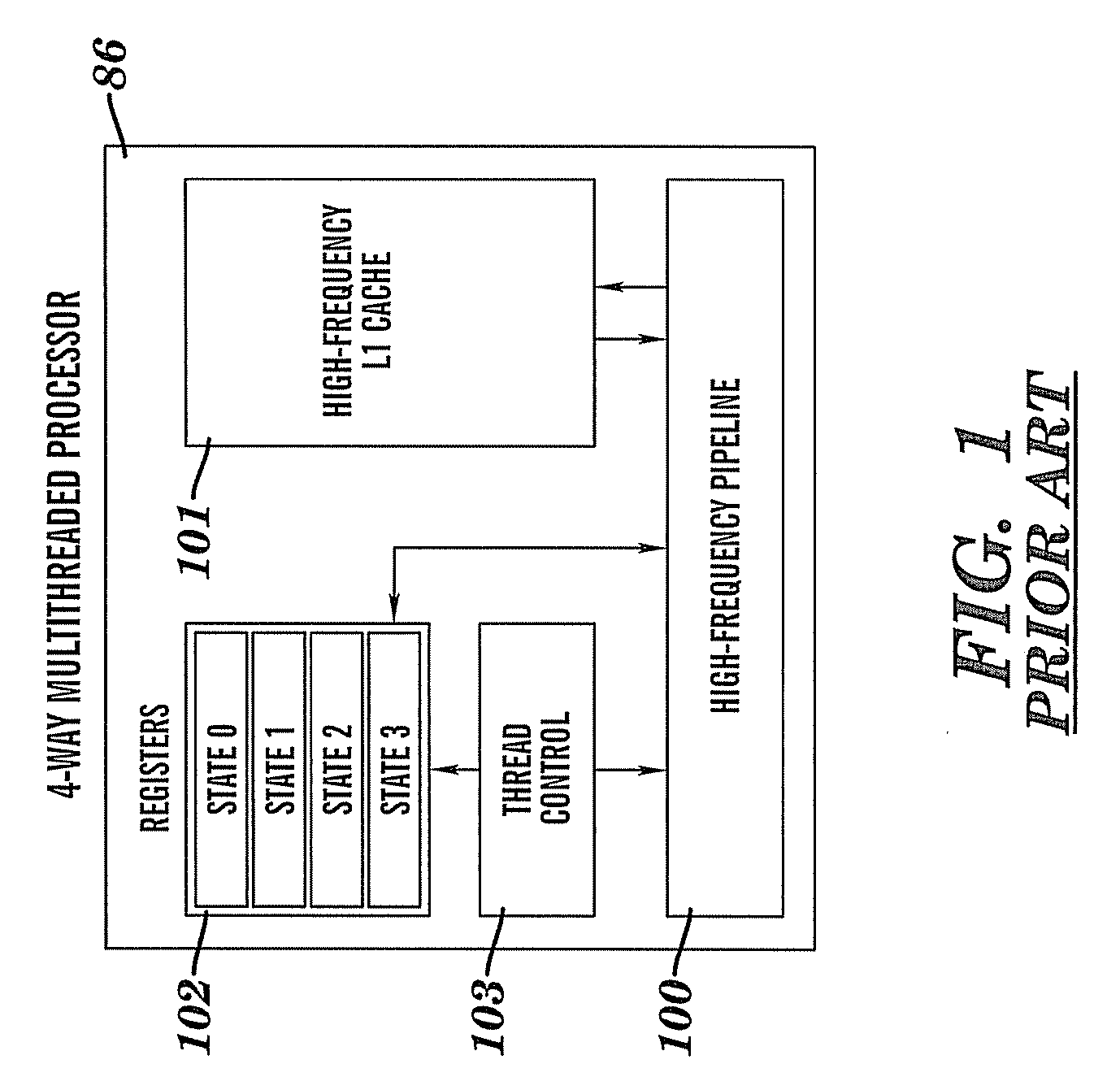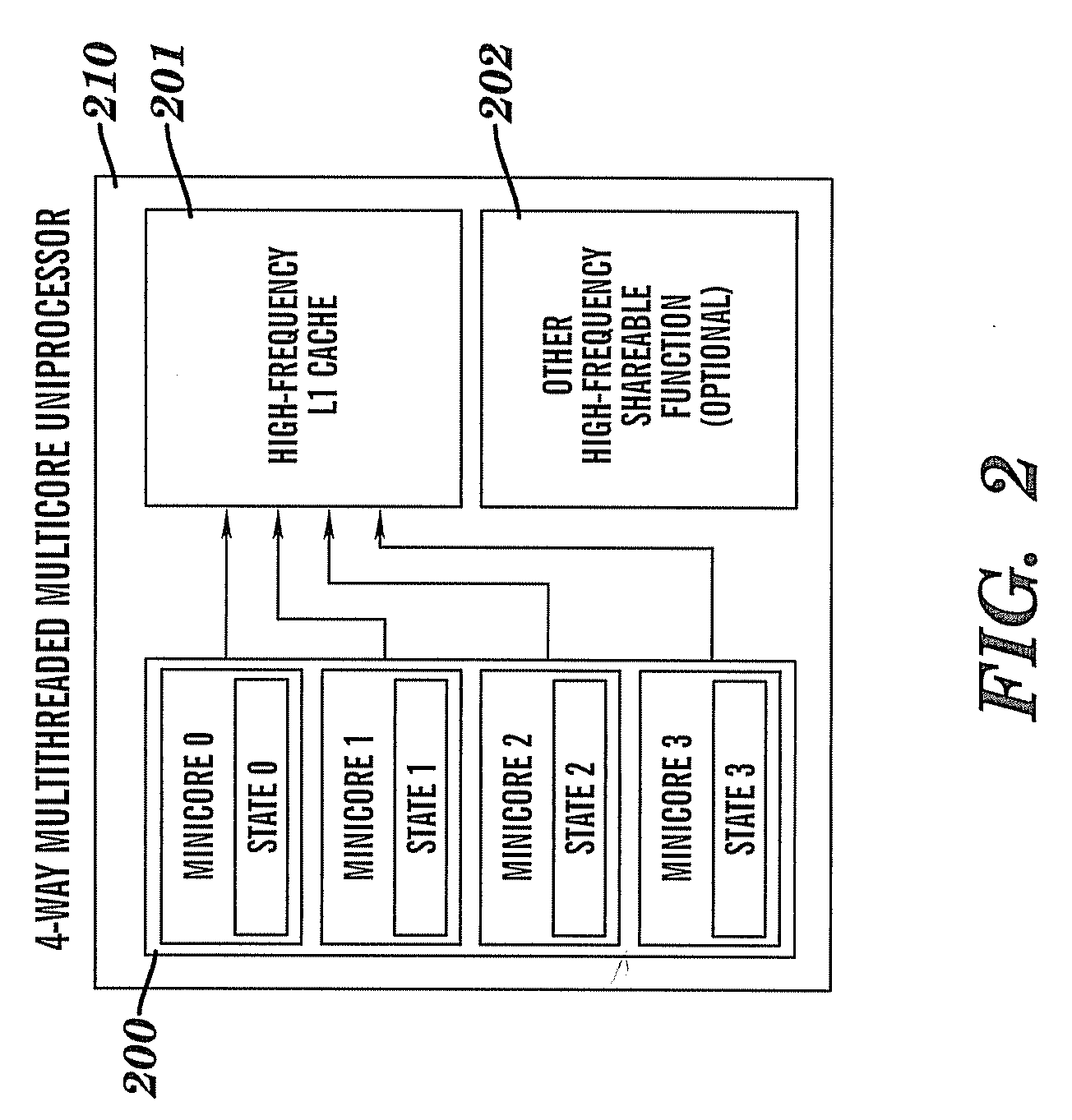Multithreaded multicore uniprocessor and a heterogeneous multiprocessor incorporating the same
a multi-core, heterogeneous technology, applied in the field of computer architecture, can solve the problems of inefficient use, burn power, and serious limitation of the amount of computation that can be done in a given area, and achieve the effect of reducing power
- Summary
- Abstract
- Description
- Claims
- Application Information
AI Technical Summary
Problems solved by technology
Method used
Image
Examples
Embodiment Construction
[0026]As discussed above, getting higher utilization out of the components of a processor for servicing multiple threads must account for three principles. First, the processor with a multithreaded core will have a degraded cycle time. Second, the multithreaded core will be more complex and more difficult to verify. Third, an L1 cache will have to be made to provide higher bandwidth to the processor.
[0027]The teachings herein ignore the prior emphasis on getting higher utilization from the elements of a prior art (usually superscalar) processor. In fact, as discussed, getting higher utilization adds considerable complexity and leads to a higher power density. The higher power density may not be tolerable in some environments.
[0028]The teachings herein provide for multithreading in a manner useful for providing a high-throughput uniprocessor. The techniques disclosed provide for design emphasis that opposes current multithreading design practices. The design provided herein uses redu...
PUM
 Login to View More
Login to View More Abstract
Description
Claims
Application Information
 Login to View More
Login to View More - R&D
- Intellectual Property
- Life Sciences
- Materials
- Tech Scout
- Unparalleled Data Quality
- Higher Quality Content
- 60% Fewer Hallucinations
Browse by: Latest US Patents, China's latest patents, Technical Efficacy Thesaurus, Application Domain, Technology Topic, Popular Technical Reports.
© 2025 PatSnap. All rights reserved.Legal|Privacy policy|Modern Slavery Act Transparency Statement|Sitemap|About US| Contact US: help@patsnap.com



